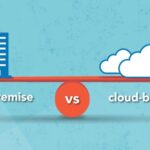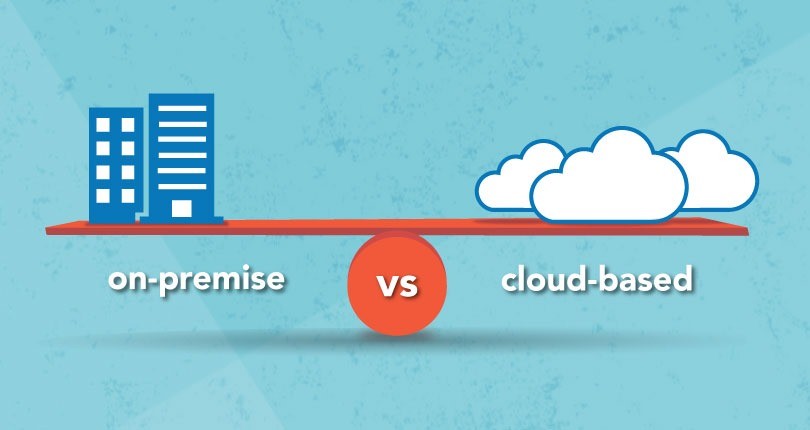As cyber threats evolve and businesses become more digital, selecting the appropriate network security model is crucial. Organizations often find themselves choosing between two popular approaches: cloud-based and on-premise security. Cloud-based solutions provide agility, remote access, and automatic updates, making them ideal for fast-growing or remote-first companies.
In contrast, on-premise security allows businesses to maintain complete control over their systems and data, which is particularly beneficial for highly regulated industries or those handling sensitive information. How can you determine which model is best suited for your organization? The choice depends on factors such as cost, compliance, scalability, and the resources of your internal IT team. With the right insights, you can align your security strategy with your business objectives and risk tolerance. Interact with Managed IT Services Nashville experts to evaluate your network security options and identify whether cloud-based or on-premise security fits your business’s goals, compliance needs, and long-term growth.
In this blog, we will explore cloud-based and on-premise network security and differences that help you determine the best option for your business.
What Is Cloud-Based Network Security?
Cloud-based network security is a framework in which security tools and services, such as firewalls, intrusion detection systems, and threat monitoring, are maintained in the cloud and provided via the Internet. Instead of relying on on-site hardware, businesses use third-party providers to protect their networks, data, and users. This approach enables more effortless scalability, faster deployment, and real-time updates, making it ideal for modern businesses with remote teams, dynamic workloads, and evolving security needs.
What Is On-Premise Network Security?
On-premise network security means security systems located and managed within a company’s buildings and equipment. This includes hardware like firewalls, routers, security appliances, and software for monitoring and threat detection. Businesses with on-premise security have complete control over their systems, data, and configurations, which is particularly important for organizations with strict regulatory requirements or sensitive information. It also allows for more customized and tailored security setups.
Cloud-Based vs On-Premise Network Security: 8 Key Differences
-
Deployment and Infrastructure Location
Cloud-based network security typically takes a proactive approach to problem-solving. Providers constantly monitor the network for potential threats, using automated tools to quickly detect and respond to issues. Since experts manage cloud solutions, they can often resolve problems faster and more adeptly, minimizing business downtime.
In Contrast, on-premise network security focuses more on manual and in-house problem-solving. Businesses need dedicated IT teams that monitor, troubleshoot, and resolve issues as they arise. While offering greater control, it can lead to slower response times if the internal team lacks the resources or expertise to handle complex security issues.
-
Cost Structure
Cloud-based security works on a subscription basis. This means businesses pay a regular fee to access the services and features. This results in lower upfront costs, as there’s no need to purchase hardware or manage installations. The subscription often covers updates, maintenance, and support, making budgeting more predictable.
In contrast, on-premise network security involves higher initial costs for hardware, software, and setup. Businesses must also fund ongoing maintenance, upgrades, and IT staff. While no recurring subscription fees exist, these additional expenses can add up, making it a more expensive option.
-
Scalability
Cloud-based security is highly scalable. As your business grows, you can easily adjust your security needs by upgrading your plan or adding new features, often with just a few clicks. This flexibility suits businesses with changing demands or those expecting rapid growth.
In contrast, on-premise network security offers limited scalability. Expanding the system typically requires purchasing additional hardware, configuring new components, and increasing IT staff. This process can be time-consuming and costly, making it harder for businesses to scale quickly or efficiently.
-
Maintenance and Updates
Cloud-based solutions relieve the pressure on your internal team by handling maintenance and updates. The provider usually updates your system with the latest security patches and improvements without disrupting your operations. This helps reduce the risk of liabilities and saves your team time.
In contrast, on-premise network security requires your in-house IT team to manually manage all maintenance tasks and updates. This includes monitoring for software patches, installing upgrades, and troubleshooting issues. Without consistent upkeep, your system could become outdated or vulnerable to security threats.
-
Accessibility for Remote Users
Cloud-based security is designed with remote access in mind. Employees can securely connect to the network from anywhere with an internet connection. It works well for businesses where people work remotely or partly from home. This ensures everyone has the same protection, no matter where they are.
In contrast, on-premise network security can be less convenient for remote access. Setting up secure connections like VPNs often requires more configuration and can strain internal resources. Without the proper setup, remote users may experience limited access or slower performance, impacting productivity.
-
Control and Customization
Cloud-based security offers less control and customization compared to on-premise solutions. While you can choose from a variety of features and plans, the provider determines the overall configuration. This works well for businesses where people work from different places or split time between the office and other locations by keeping everything safe.
In contrast, on-premise network security gives businesses complete control over their security system. You can customize everything, from hardware choices to software configurations, ensuring it aligns precisely with your needs. While this offers more flexibility, it also demands more time and expertise to manage effectively.
-
Compliance and Data Sovereignty
Cloud providers typically meet common industry standards and certifications. However, since your data could be kept in computer centers in different areas or nations, this might cause worries about who controls the data. If your business operates in a highly regulated industry or is subject to strict local data laws, it may be challenging to control exactly where your data resides.
In contrast, on-premise network security offers greater control over data storage and handling. Since all data stays within your infrastructure, it’s easier to ensure compliance with specific regulations and local data laws, making it a preferred choice for businesses with stringent legal requirements.
-
Incident Response and Monitoring
Cloud-based network security typically offers 24/7 monitoring and immediate incident response as part of the service. Providers often use advanced tools and automation to quickly detect potential threats and address issues. This reduces the burden on your internal team, ensuring fast action and minimizing downtime.
In contrast, on-premise network security requires your internal IT team to handle monitoring and incident response. This can be resource-intensive and lead to slower reactions, especially if the team is understaffed or overwhelmed. While on-premise systems offer more direct control, they often lack the automated, round-the-clock protection that cloud solutions provide.
In Conclusion
When choosing between cloud-based and on-premise network security, it is essential to consider your business needs, resources, and growth expectations. Cloud-based security offers flexibility, scalability, and lower upfront costs, making it an excellent option for businesses that want a hassle-free and cost-effective solution. In contrast, on-premise security provides greater control and customization, making it ideal for companies with specific compliance requirements or those that prefer complete infrastructure oversight. By evaluating your company’s size, growth plans, and security needs, you can make an informed decision that supports your long-term success. For more insights and expert help, contact the IT Support Nashville team.










